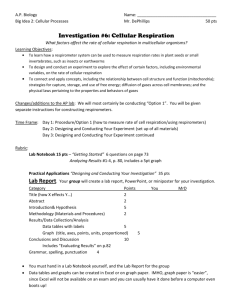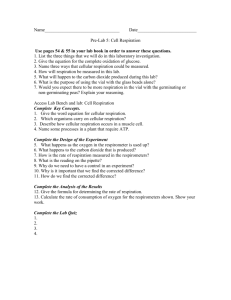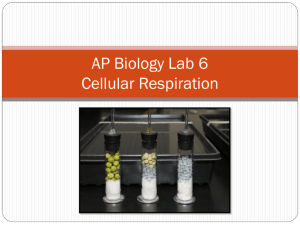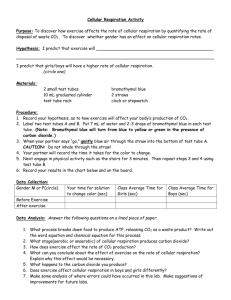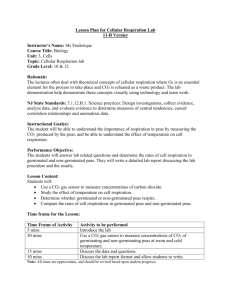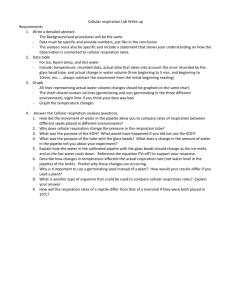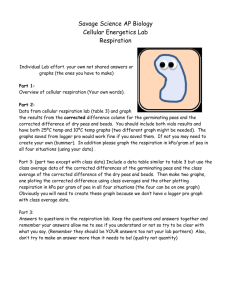Laboratory: The Seedy Side of Respiration
advertisement
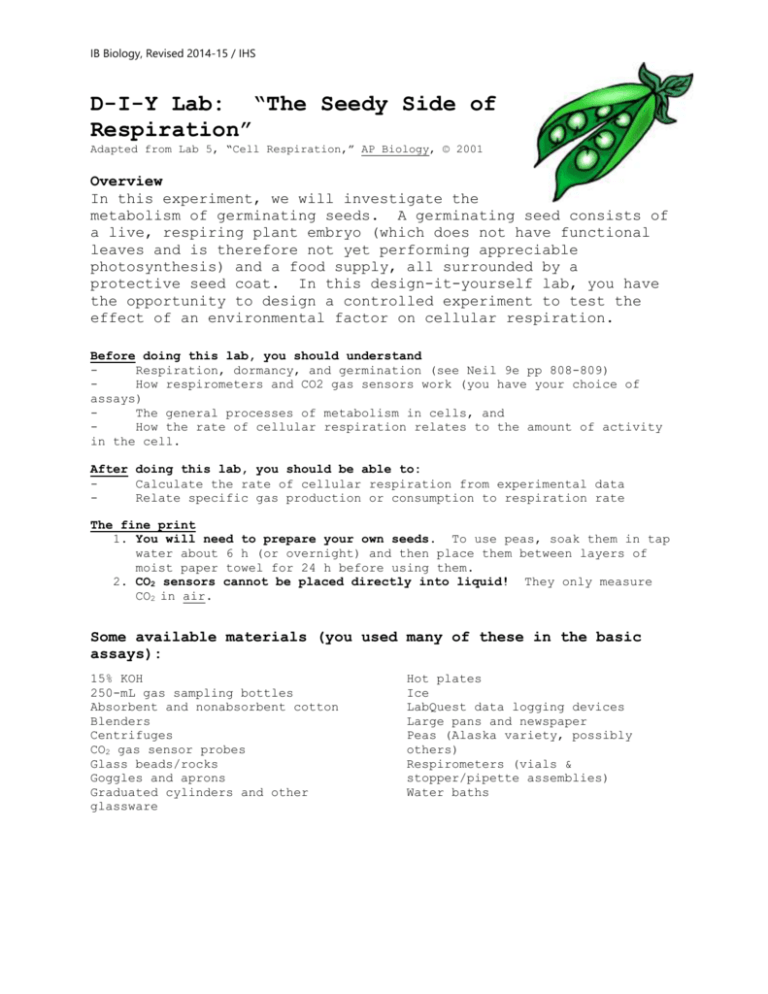
IB Biology, Revised 2014-15 / IHS D-I-Y Lab: “The Seedy Side of Respiration” Adapted from Lab 5, “Cell Respiration,” AP Biology, © 2001 Overview In this experiment, we will investigate the metabolism of germinating seeds. A germinating seed consists of a live, respiring plant embryo (which does not have functional leaves and is therefore not yet performing appreciable photosynthesis) and a food supply, all surrounded by a protective seed coat. In this design-it-yourself lab, you have the opportunity to design a controlled experiment to test the effect of an environmental factor on cellular respiration. Before doing this lab, you should understand Respiration, dormancy, and germination (see Neil 9e pp 808-809) How respirometers and CO2 gas sensors work (you have your choice of assays) The general processes of metabolism in cells, and How the rate of cellular respiration relates to the amount of activity in the cell. After doing this lab, you should be able to: Calculate the rate of cellular respiration from experimental data Relate specific gas production or consumption to respiration rate The fine print 1. You will need to prepare your own seeds. To use peas, soak them in tap water about 6 h (or overnight) and then place them between layers of moist paper towel for 24 h before using them. 2. CO2 sensors cannot be placed directly into liquid! They only measure CO2 in air. Some available materials (you used many of these in the basic assays): 15% KOH 250-mL gas sampling bottles Absorbent and nonabsorbent cotton Blenders Centrifuges CO2 gas sensor probes Glass beads/rocks Goggles and aprons Graduated cylinders and other glassware Hot plates Ice LabQuest data logging devices Large pans and newspaper Peas (Alaska variety, possibly others) Respirometers (vials & stopper/pipette assemblies) Water baths


